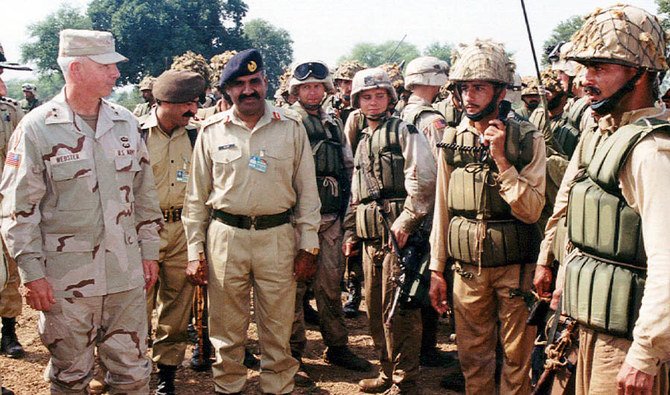The relationship between the United States and Pakistan is complex and multifaceted, characterized by periods of cooperation, mistrust, and tension. Spanning over seven decades, this relationship has been shaped by geopolitical interests, security concerns, and regional dynamics. To understand the dynamics of this relationship, it is necessary to explore its historical context, key areas of cooperation and conflict, as well as the implications for regional stability and global security.
Historical Background:
The relationship between the United States and Pakistan dates back to Pakistan’s independence in 1947. The United States initially viewed Pakistan as a strategic ally in South Asia, particularly during the Cold War era. Pakistan’s geographical location, bordering Afghanistan, Iran, China, and India, made it an important partner for the United States in its efforts to contain the spread of communism and counter Soviet influence in the region.
In the 1950s and 1960s, the United States provided significant military and economic assistance to Pakistan, including arms sales and development aid. However, relations between the two countries became strained in the late 1960s and early 1970s due to Pakistan’s close ties with China and its role in the Indo-Pakistani conflicts, particularly the Bangladesh Liberation War of 1971.
Cooperation and Conflict:
Despite periods of tension, the United States and Pakistan continued to cooperate on various fronts, particularly in the realm of security and counterterrorism. During the Soviet invasion of Afghanistan in the 1980s, Pakistan emerged as a key ally of the United States in supporting the Afghan mujahideen resistance fighters. The CIA, in collaboration with Pakistan’s Inter-Services Intelligence (ISI), provided arms, training, and financial support to the mujahideen, contributing to the eventual withdrawal of Soviet forces from Afghanistan.
However, the relationship between the United States and Pakistan faced new challenges in the post-9/11 era. Following the terrorist attacks of September 11, 2001, the United States launched its War on Terror and sought Pakistan’s cooperation in combating terrorism and dismantling terrorist networks, particularly al-Qaeda and the Taliban, which were operating from sanctuaries in Pakistan’s tribal regions along the Afghanistan-Pakistan border.
While Pakistan initially cooperated with the United States in its counterterrorism efforts, tensions arose over issues such as drone strikes, which Pakistan viewed as a violation of its sovereignty, and the presence of militant groups operating with impunity within its borders. The discovery and elimination of Osama bin Laden by U.S. forces in Abbottabad in 2011 further strained relations between the two countries, as Pakistan faced accusations of sheltering the world’s most wanted terrorist.
Regional Dynamics and Security Concerns:
Broader regional dynamics and security concerns have influenced the United States’ engagement with Pakistan. Pakistan’s relationship with neighboring India, with whom it has fought several wars and continues to have unresolved territorial disputes, adds a layer of complexity to U.S.-Pakistan relations. The United States has sought to balance its relations with both countries while encouraging dialogue and confidence-building measures to reduce tensions in the region.

Moreover, Pakistan’s nuclear capabilities and proliferation activities have been a source of concern for the United States and the international community. Pakistan conducted its first nuclear tests in 1998, following similar tests by India, leading to international condemnation and sanctions. The proliferation activities of Pakistani nuclear scientist A.Q. Khan further raised concerns about the security of Pakistan’s nuclear arsenal and the potential for nuclear proliferation to other countries or non-state actors.
In addition to security concerns, the United States has also been engaged with Pakistan on economic and development issues. Pakistan faces numerous challenges, including poverty, corruption, and governance issues, which have hindered its socio-economic development. The United States has provided economic assistance and development aid to Pakistan to address these challenges and promote stability and prosperity in the region.
Current Challenges and Future Prospects:
Despite decades of cooperation, the relationship between the United States and Pakistan remains fraught with challenges. The divergent interests and priorities of both countries, as well as mistrust and suspicion, continue to strain bilateral ties. Pakistan’s perceived support for militant groups, its complex relationship with Afghanistan, and its growing ties with China have further complicated efforts to build trust and cooperation between the two countries.
However, there are also opportunities for cooperation and engagement between the United States and Pakistan. Both countries share an interest in promoting peace and stability in Afghanistan, combating terrorism and extremism, and addressing regional security challenges. The United States’ withdrawal from Afghanistan in 2021 has created new dynamics in the region, with implications for U.S.-Pakistan relations and the broader security landscape.
Moving forward, building a more stable and constructive relationship between the United States and Pakistan will require dialogue, diplomacy, and mutual respect. Addressing the underlying sources of mistrust and working towards common objectives will be essential for realizing the potential of this relationship and advancing peace, security, and prosperity in South Asia and beyond.
